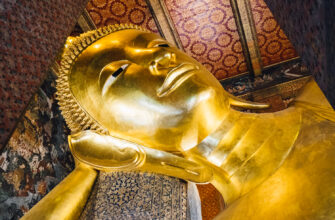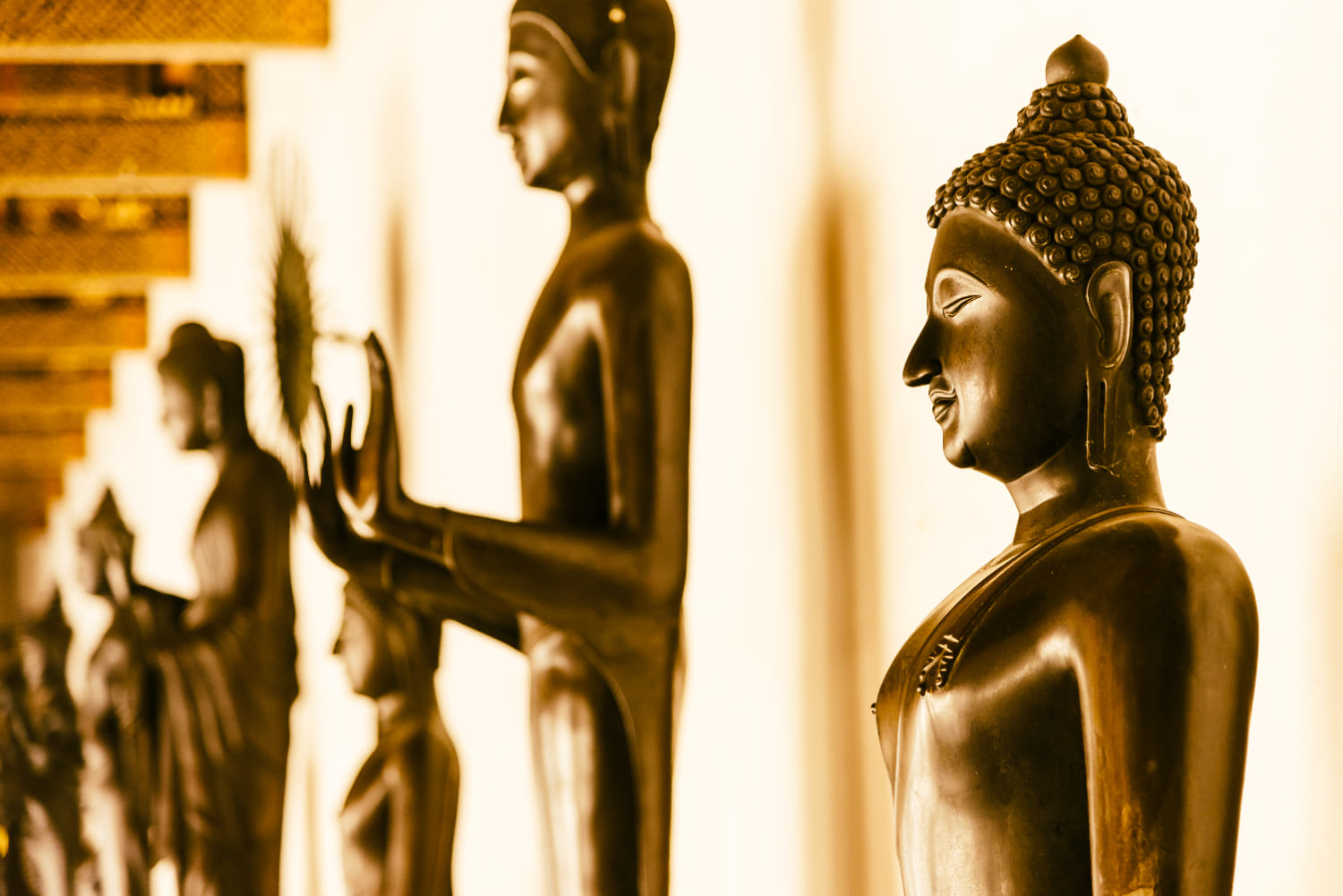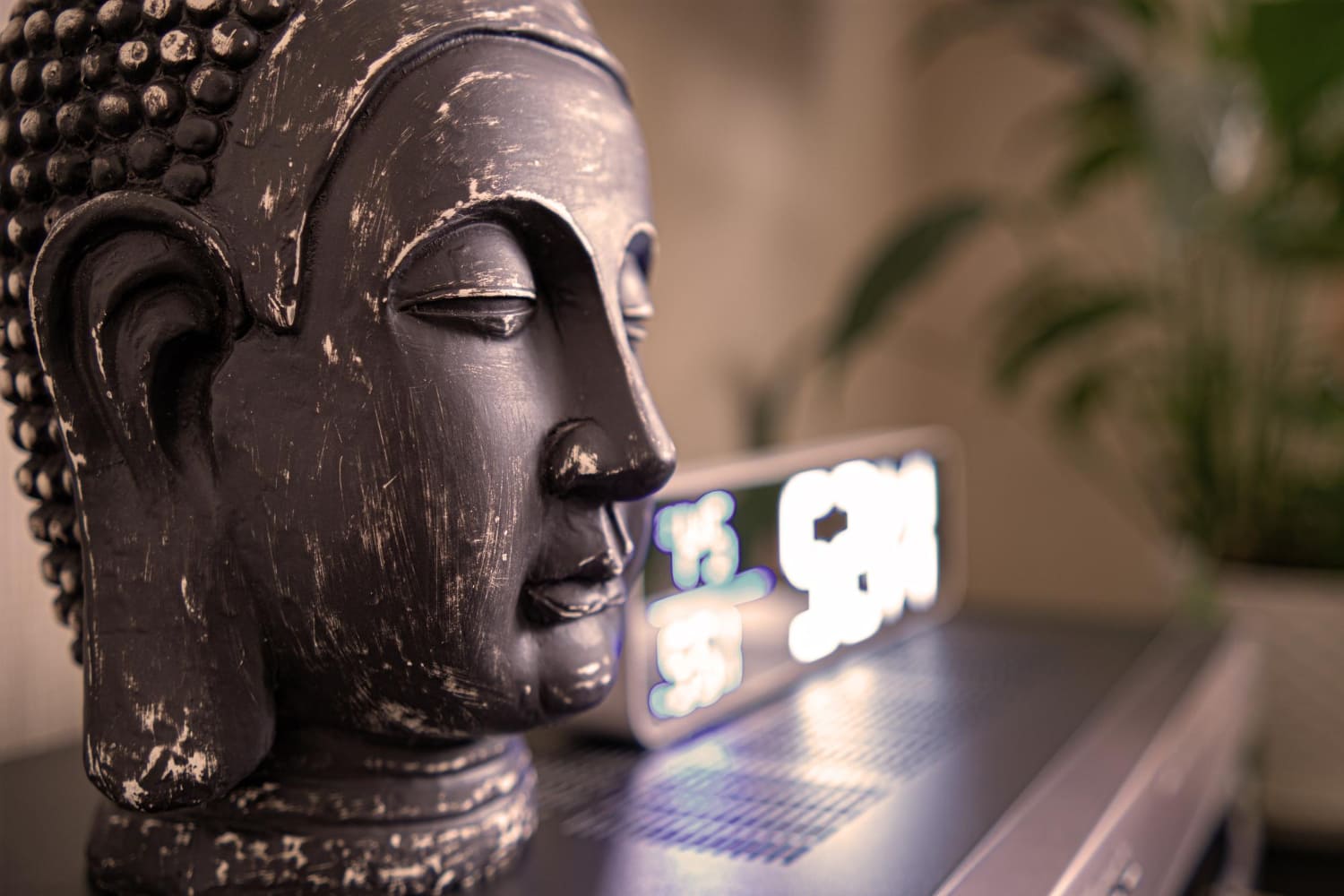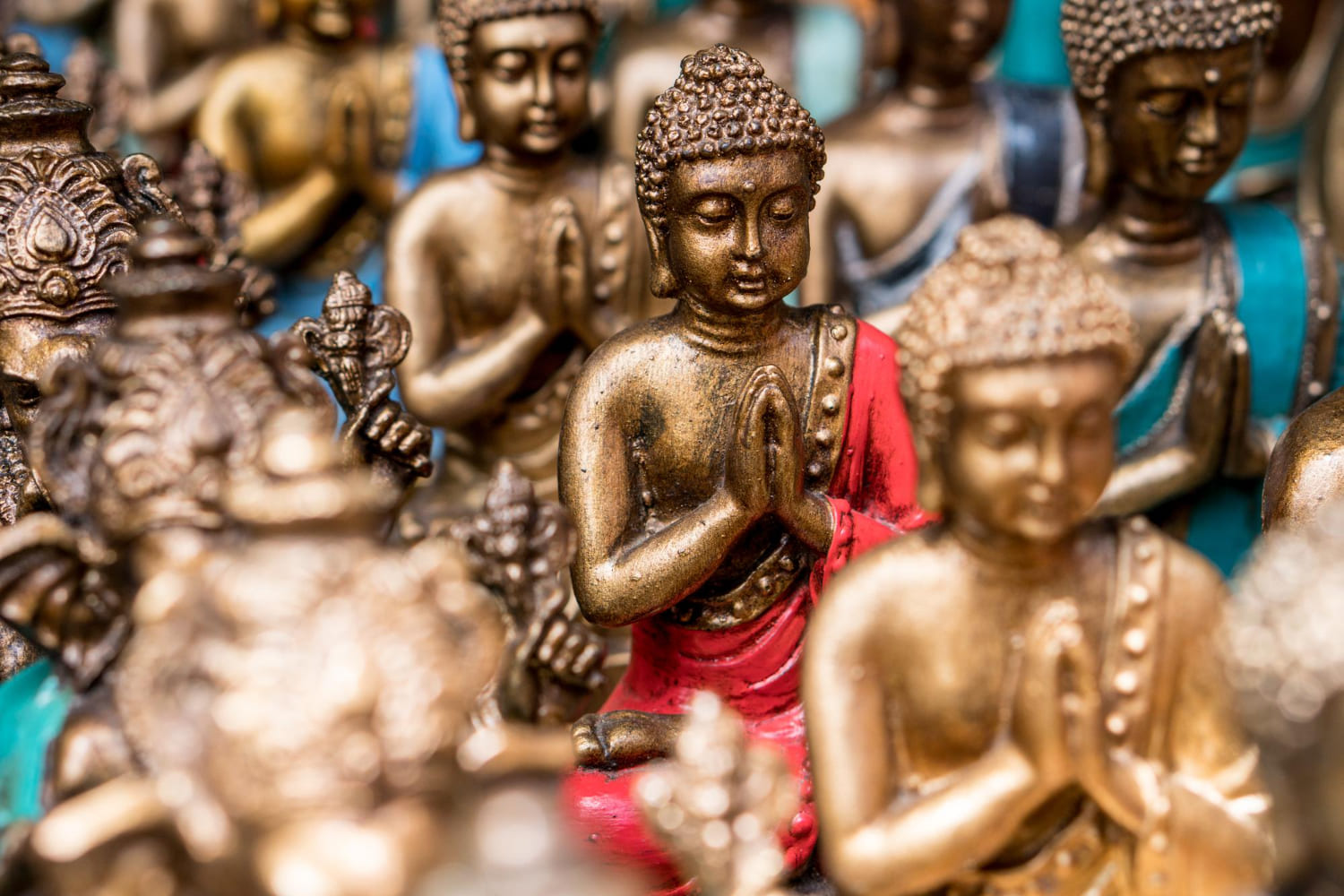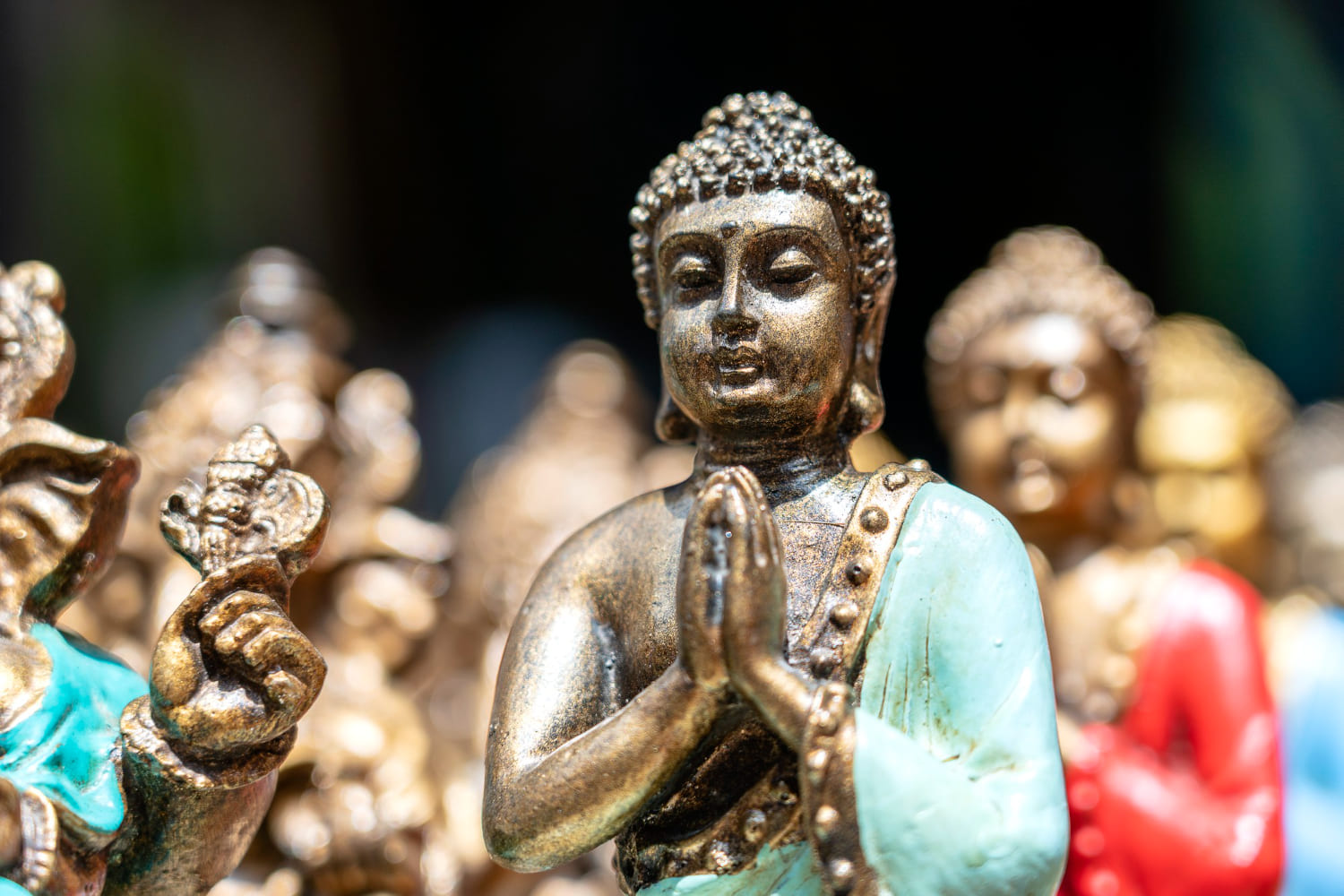Buddhism is one of the world’s major religions, with over 500 million followers worldwide. It originated in ancient India and has since spread to various parts of the world.
Buddhism is a complex and diverse religion with many different schools, traditions, and practices.
One of the most significant differences between the various schools of Buddhism is the way they interpret and apply the teachings of the Buddha.
Some schools focus on the historical teachings of the Buddha, while others emphasize the importance of meditation and mindfulness.
Additionally, some schools are more focused on the individual’s spiritual development, while others emphasize the importance of community and social engagement.
Understanding the different types of Buddhism is essential for anyone interested in learning more about the religion.
This article will provide a comprehensive guide to the various schools, traditions, and practices of Buddhism, including their origins, beliefs, and practices.
Whether you are a beginner or an experienced practitioner, this guide will help you gain a deeper understanding of the rich and diverse world of Buddhism.
Theravada Buddhism
Theravada Buddhism, also known as the “Way of the Elders,” is one of the three main branches of Buddhism. It is the oldest surviving Buddhist school and is practiced primarily in Southeast Asia, including Sri Lanka, Thailand, Cambodia, and Laos.
Theravada Buddhism is based on the Pali Canon, a collection of scriptures that are believed to be the oldest surviving record of the Buddha’s teachings.
The core teachings of Theravada Buddhism focus on the Four Noble Truths and the Eightfold Path, which outline the path to enlightenment.
One of the key differences between Theravada Buddhism and other branches of Buddhism is its emphasis on individual liberation.
Theravada Buddhists believe that each individual is responsible for their own liberation and that the path to enlightenment is a personal journey that must be undertaken by each individual.
Theravada Buddhism also places a strong emphasis on meditation, which is seen as a means of developing mindfulness and concentration.
Monks and nuns play a central role in Theravada Buddhism, and many laypeople support the monastic community through donations and other forms of support.
Overall, Theravada Buddhism is a rich and diverse tradition that has played a significant role in the development of Buddhism as a whole. Its focus on individual liberation and meditation practice has made it a popular choice for those seeking a path to enlightenment.
Mahayana Buddhism
Mahayana Buddhism is one of the main branches of Buddhism, originating in India and spreading throughout East and Southeast Asia.
It is characterized by its emphasis on the bodhisattva ideal, which is the aspiration to attain enlightenment for the benefit of all sentient beings.
One of the key differences between Mahayana and other forms of Buddhism is its belief in the existence of numerous celestial beings known as bodhisattvas.
These bodhisattvas are seen as compassionate beings who have attained enlightenment but have chosen to remain in the world to help others achieve liberation.
Mahayana Buddhism also places a great emphasis on the concept of emptiness, which is the idea that all phenomena are empty of inherent existence.
This concept is often associated with the Madhyamaka school of Buddhist philosophy, which holds that all phenomena are empty of inherent existence because they are dependent on other factors and conditions.
Another important aspect of Mahayana Buddhism is the doctrine of the Three Bodies of the Buddha, which describes the different aspects of the Buddha’s existence.
These are the Dharmakaya (the ultimate nature of the Buddha), the Sambhogakaya (the celestial body of the Buddha), and the Nirmanakaya (the physical body of the Buddha).
Vajrayana Buddhism
Vajrayana Buddhism is a form of Mahayana Buddhism that originated in northern India around the 5th century CE, took root in Tibet in the 7th and 8th centuries, and then spread across the Himalayan region.
It is widely known as Tibetan Buddhism though tantric Buddhism is also found in Japan, in the Shingon and Tendai traditions.
Vajrayana Buddhism emphasizes the use of tantra, which is a set of techniques and practices designed to accelerate the path to enlightenment. It also places great importance on the role of the guru or spiritual teacher, who is seen as a vital guide on the path to enlightenment.
Vajrayana Buddhism also incorporates a number of esoteric practices, such as deity yoga, mantra recitation, and visualization, which are intended to help practitioners develop their spiritual insight and achieve enlightenment more quickly.
One of the key features of Vajrayana Buddhism is its emphasis on the use of symbols, such as mandalas, mudras, and ritual objects, which are believed to represent different aspects of the enlightened mind.
These symbols are used in a variety of practices, including meditation, visualization, and ritual ceremonies. Vajrayana Buddhism also places great importance on the concept of emptiness, which is the idea that all phenomena are ultimately devoid of inherent existence.
Some of the major schools of Vajrayana Buddhism include the Nyingma, Kagyu, Sakya, and Gelug schools, which each have their own unique practices and teachings.
The Nyingma school is the oldest school of Tibetan Buddhism and places great emphasis on the practice of Dzogchen, which is a form of meditation designed to help practitioners recognize their true nature.
The Kagyu school is known for its emphasis on the practice of Mahamudra, which is a form of meditation that focuses on the nature of mind. The Sakya school is known for its emphasis on the study of Buddhist philosophy and the use of ritual practices to cultivate spiritual insight.
The Gelug school, which was founded by the Tibetan philosopher and monk Tsongkhapa, is known for its emphasis on the study of Buddhist philosophy and the use of logic and reason to understand the nature of reality.
Pure Land Buddhism
Pure Land Buddhism is a broad branch of Mahayana Buddhism that originated in India around the 2nd century BCE. It is focused on achieving rebirth in a Pure Land, a type of paradise in which everything is conducive for becoming a Buddha.
It is one of the most widely practiced traditions of Buddhism in East Asia, particularly in China and Japan.
The Pure Land tradition emphasizes recitation of the name of Amitabha, the Buddha of Infinite Light, as a method for going to his Pure Land of Happiness.
According to this tradition, reciting Amitabha’s name with pure faith and devotion will ensure rebirth in the Pure Land, where one can more easily attain enlightenment.
Unlike some other forms of Buddhism, Pure Land Buddhism places a great emphasis on faith and devotion to Amitabha as the primary means of achieving enlightenment. This emphasis on devotion has led some scholars to describe Pure Land Buddhism as a form of “Buddhist salvationism.”
Despite its emphasis on devotion, Pure Land Buddhism is also known for its philosophical richness. For example, the tradition teaches the concept of “other-power,” which suggests that enlightenment is not solely achieved through one’s own efforts, but also through the power of Amitabha’s grace and compassion.
This concept has been influential in the development of other forms of Buddhism, such as Zen and Nichiren Buddhism.
Zen Buddhism
Zen Buddhism is a branch of Mahayana Buddhism that originated in China and spread to Japan in the 12th century. It emphasizes meditation, mindfulness, and direct experience over relying on scriptures and study.
Zen Buddhism is based on the teachings of Bodhidharma, an Indian monk who traveled to China in the 5th century and is credited with bringing the practice of meditation to the country.
One of the key practices in Zen Buddhism is zazen, or seated meditation. During zazen, practitioners sit in a specific posture and focus on their breath, allowing thoughts to come and go without judgment. This practice is meant to cultivate awareness and clarity of mind.
Another important aspect of Zen Buddhism is the use of koans, or paradoxical riddles or statements that are used to challenge the mind and encourage insight. Koans are often used in conjunction with zazen practice as a way to deepen understanding and realization.
Overall, Zen Buddhism emphasizes the importance of direct experience and personal realization over relying on external sources of knowledge. It is known for its simplicity, straightforwardness, and emphasis on practical application in daily life.
Nichiren Buddhism
Nichiren Buddhism is a form of Mahayana Buddhism that was founded by the Japanese monk Nichiren in the 13th century. It is based on the Lotus Sutra, which Nichiren believed was the ultimate teaching of the Buddha.
Nichiren Buddhism focuses on the chanting of the mantra “Nam-myoho-renge-kyo” as a means of achieving enlightenment in this lifetime.
Nichiren Buddhism differs from other schools of Buddhism in its rejection of other schools and its belief that it is the only correct tradition. It also emphasizes the importance of individuals taking responsibility for improving themselves.
Nichiren’s practices, such as chanting the daimoku, reflect a spirit of egalitarianism, which asserts that the dharma and enlightenment are available to everyone—be they rich or poor, educated or uneducated, lay or ordained, male or female.
For many Nichiren Buddhists today, social activism and engagement is a vital part of their practice.
Secular Buddhism
Secular Buddhism is a form of Buddhism that emphasizes the practical aspects of the teachings rather than the religious or supernatural elements.
It is based on humanist, skeptical, and agnostic values, valuing pragmatism and often naturalism, eschewing beliefs in the supernatural or divine.
Secular Buddhism is sometimes referred to as agnostic Buddhism, Buddhist agnosticism, ignostic Buddhism, atheistic Buddhism, pragmatic Buddhism, Buddhist atheism, or Buddhist secularism. It is a broad term that encompasses various forms of Buddhism that emphasize the practical aspects of the teachings.
One of the key features of secular Buddhism is its emphasis on mindfulness meditation. Mindfulness meditation is a technique that involves paying attention to the present moment without judgment.
It is a way of training the mind to be more aware of one’s thoughts, feelings, and sensations. Secular Buddhists also tend to be more critical of traditional Buddhist teachings and practices.
They are more likely to question the validity of traditional religious beliefs and practices and to seek out alternative ways of understanding the teachings.
Overall, secular Buddhism is a modern, practical approach to Buddhism that emphasizes the importance of mindfulness, critical thinking, and skepticism. It is a way of applying Buddhist teachings to everyday life in a way that is relevant and meaningful to modern people.
Conclusion
After exploring the different types of Buddhism, it is clear that there is much diversity within the religion.
From the Theravada tradition, which emphasizes individual enlightenment through meditation and adherence to the Buddha’s teachings, to the Mahayana tradition, which focuses on compassion and the bodhisattva ideal, each type of Buddhism offers a unique approach to spiritual practice.
Despite their differences, all types of Buddhism share a common goal: the cessation of suffering and the attainment of enlightenment.
Whether one practices Zen, Tibetan Buddhism, or any other type of Buddhism, the ultimate aim is to cultivate wisdom, compassion, and inner peace.
It is important to note that the types of Buddhism discussed in this article are not exhaustive. There are many other schools and traditions of Buddhism, each with their own unique practices and beliefs.
However, by understanding the differences between the major types of Buddhism, one can gain a deeper appreciation for the richness and complexity of this ancient religion.
